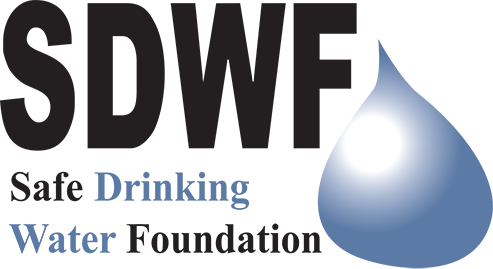Purpose: To determine the Nitrate concentration in drinking water from 4 different sources, plus a Canadian Guideline Limit Sample (CGLS) for quality control purposes:
Urban treated water
Rural (aboriginal and/or non- aboriginal community) treated water
Untreated raw source water
Local community treated water
Canadian Guideline Limit Sample for Nitrate
Determination will be done by using a test strip method. You will compare the different results, you will also see if the water meets the Canadian Drinking Water Guidelines.
Industrial emissions are extensively responsible for the Nitrogen in the environment, which in turn breaks down to contribute to contamination that we have to deal with, the farming community also contributes by adding nitrate-containing manures and chemical fertilizers, which gets picked up in runoff (rain, snow melt) and can contaminate water sources.
There are many negative health effects related to Nitrate, some of which include blood deficiencies, thyroid problems, decreased vitamin A, and cancer. It is, however, rare that nitrate levels are above the Canadian Water Quality Guideline for drinking water. Contaminated private wells are likely the most common place where high levels of nitrate are found.
Materials:
1 - 50 mg/L (parts per million) Canadian Guideline Limit Sample for Nitrate.
5 - Test strip packets to determine Nitrate.
4- 10 mL disposable beakers.
Method:
Label the four beakers with their respective names (no CGLS).
Put 10 mL of sample in their respective beakers; use the vial for the Canadian Guideline Limit Sample test.
Dip one test strip in water for 2 seconds with no motion.
Remove the test strip and allow colors to develop for 1 minute, by lying across top of beaker or vial.
Match the colour reading (pink number) and record. Please note: The end pad of the test strip measures Nitrate; whereas the other pad on the test strip measures Nitrite. With this test, we are more concerned with the Nitrate reading.
Record Your Results
Results
The Canadian Guideline and those for the U.S. and the World Health Organization range between 45-50 mg nitrate/L. The Canadian Guideline Limit Sample for Nitrate should give a result very close to the 50 ppm Nitrate limit; there should be no nitrite in the Canadian Guideline Limit Sample. A darker colour means that the water Does Not meet the Canadian Drinking Water Guidelines.
Safe Handling of Materials
Caution must be taken at all times when handling any chemicals. Although this test is safe to use in any area, please be cautious with the materials supplied.
Visit the Safe Drinking Water Foundation website www.safewater.org to learn more about issues affecting safe drinking water.
Nitrate:
What is nitrate and why do we test for it?
Nitrate (No3) is a compound of nitrogen and oxygen that is found in many everyday food items such as spinach, lettuce, beets, and carrots. There are usually low levels of nitrates that occur naturally in water, but the majority of dietary nitrate intake is from food rather than water. Nitrates can come from a variety of sources: fertilizer and manure run-off, animal feedlots, wastewater and sludge, septic systems, and nitrogen fixation from the atmosphere by legumes, bacteria, and lightning. Nitrate in water is colourless, tasteless, and odourless. Therefore, it can only be detected using chemical analysis.
What are the current Canadian limits for nitrate?
The current Canadian limit is 45 mg NO3/L (10.2 mg NO3-N/L). Above this level, an alternate source of water should be available for infants under 6 months of age.
What are the health risks associated with high nitrate levels?
There are a few potentially serious health risks associated with drinking water high in nitrates. The most serious is Methemoglobinemia (Blue-Baby Syndrome), which occurs most often in infants under 6 months of age. Nitrate becomes toxic when it is reduced to nitrite. This process can happen both in the saliva and in the stomach. The stomach acid of infants is less acidic than that of adults and is, therefore, more conducive to the growth of nitrate-reducing bacteria. The nitrate is reduced to nitrite in the blood and then combines with haemoglobin to form a compound called methemoglobin.
Methemoglobin is not as efficient as haemoglobin at carrying oxygen to body tissues so oxygen deprivation results. If an infant is affected by Methemoglobinemia, the skin around the mouth and on the extremities will turn blue and the child will experience shortness of breath. Severe Methemoglobinemia can result in brain damage and death. However, if the symptoms are recognized and medical help is sought immediately, the condition can be easily treated with an injection of methylene blue. The majority of Blue Baby Syndrome cases have occurred at nitrate levels over 100 mg/L.
Healthy adults can consume large amounts of nitrate without suffering adverse health effects. The nitrate consumed daily in the diet is readily absorbed and is excreted as urine. However, prolonged ingestion of high levels of nitrate has been linked to stomach problems and may increase risk of bladder cancer.
What do I do if my water exceeds the recommended nitrate limit?
Boiling drinking water will not decrease its nitrate concentration. In fact, the nitrate concentration will actually increase because of the evaporation of the water. Water that exceeds the recommended nitrate levels should not be consumed, in any way, by infants under 6 months old. Charcoal filters and water softeners are also not adequate treatment methods for elevated level of nitrate in drinking water. Several treatment options do exist and these include the following:
Distillation
Reverse osmosis
Ion-Exchange (Nitrate ions are exchanged for something else, such as chlorine)
Contact your local water treatment authorities to find out which method would be right for your water system.




